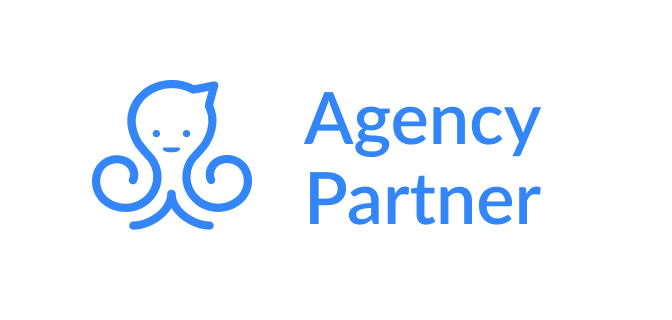Before considering any ideas, we ought, perhaps, to consider the question: why bother?
After all, the situation is so fluid that any strategy you prepare now could be rendered out of date by next week.
If one thing has proven to be certain about the pandemic, it’s that nothing is certain. It’s almost like trying to build a house on sand.
Nevertheless, I am still firmly of the opinion that to quote that old adage, failure to plan is equivalent to planning to fail. You might have to adjust your strategy, or even rethink it all together, but that’s no reason to not develop one in the first place.
A strategy is useful because it enables you to consider priorities. By having a written strategy, you also make those priorities explicit.
That’s not a bad idea: you might know what they are, but do all the members of your workforce, or your customers?
Aims
A good starting point is to decide what your aims are before you can begin to prioritise them.
Some aims to consider might be:
- Keep in business. This is clearly a key issue given the general state of the economy, the state of uncertainty, and the plethora of free edtech and other resources available for free.
- Gain more clients.
- Gain more “fans”.
- Gain more newsletter subscribers/video channel subscribers.
10 Ideas to think about
Here are 10 examples of approaches to consider, once you’ve decided what your aims and priorities are.
1. Reactivate old customers
In their quest to gain new customers, companies sometimes forget about their existing ones.
Apart from the fact that it costs much more to acquire new customers than to retain existing ones, the existing ones are your biggest advocates.
They’re the ones who have been using your products or service, and hopefully will be engaging in word of mouth marketing on your behalf without even having been asked.
Bryan Plumb, CEO of Bee Digital Marketing, has a simple 9-word email he uses to re-engage existing or past clients.
2. Find out who your typical customers are, and what their challenges are through a questionnaire
This is much easier to do if you already have a company newsletter, but even if you don’t have one you could still run a survey from your website.
Many companies offer a freebie in exchange for useful information, such as an exclusive report or a white paper.
A few things to bear in mind here are:
- Be mindful of the fact that when you offer a freebie you may get nonsense responses from people who just want the freebie.
- Be aware of data privacy (GDPR) issues when contacting people. Basically, you’re not allowed to send emails to people who haven’t signed up top receive emails from you.
- It’s a well-established fact from research in the field of economics that some people’s purchasing decisions are different in real life to what they say they will buy when asked in a survey.
3. Identify the influencers and the decision-makers
It can be quite useful to try to find this out when running a survey, but it can be difficult.
This is because in real life, the influencers may not be the budget-holders or hold a position of authority within the school. Nevertheless, it’s worth asking questions like, Who makes the purchasing decisions?
4. Carry out research among students and parents too if possible
This is quite difficult to do these days, but one approach is to ask your customers if they could run a student survey on your behalf, making provision to anonymise the data.
5. Whip up some white papers
Reports and white papers were mentioned earlier.
These don’t have to be very long. What they should be is insightful, or a useful summary or collation of information.
6. Step up that Twitter presence
If the idea of a white paper sounds too demanding or time-consuming, a presence on Twitter could be worth considering.
For example, useful websites, or suggestions on how to translate DfE updates into action, or perhaps just some lighthearted comments or activities to take people’s minds off things.
For example, every Wednesday at 8 pm Gladstone, the Treasury cat, invites cat owners to take photos of their cat in a particular position and then post it to Twitter.
This is pointless but fun! It provides welcome light relief from our current tribulations. See #GladdersYoga.
7. Choose your freemium models wisely
Many companies attract new customers by offering freebies or a cut-down service. At the 2019 Marketing to Schools Summit (M2SS), Jodie Lopez said that the quality of your lead magnet (free giveaway) should be as good as the actual product.
I came across a service recently in which the free version had the same functionality as the paid-for version.
The only difference was that the latter didn’t have the company’s branding on it.
8. Collect those case studies
Case studies of your product in action can be quite useful, especially if they have been written by a third party or by the people using the product.
(In the interests of transparency and credibility, the case study is open about any extra assistance the school was given, such as being given the product or service free of charge.)
The beauty of a case study is that it can go into more depth, and can be more objective than an advertisement. (But note that sponsored blog posts or advertorials must be identified as such.)
9. Get that blog up-to-date
On the subject of blog posts, a blog is a good way for a company to keep its website fresh by adding useful and interesting content at least once a week.
A regularly updated blog has been found to keep people coming back to the website to find out what the latest article is all about.
10. Don’t forget to leave room for flexibility
Whatever you decide to concentrate on, it’s crucial to leave “wiggle room”.
Strategy documents that are so full of so-called SMART objectives that there is no flexibility lend themselves to cheating in some way.
Even without blatant cheating, targets can easily create a perverse incentive to achieve the target rather than the thing the target is meant to represent.
An example I came across was the Head of Computing who told me that he teaches the easier stuff towards the end of the school year because his students will do better on tests as the year goes on, making it look like they’re making progress.
Cynical, perhaps, but understandable too.












